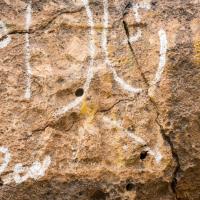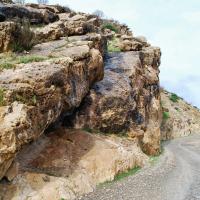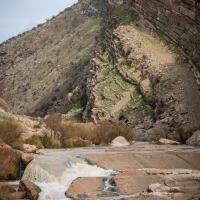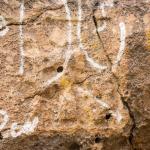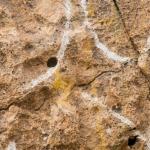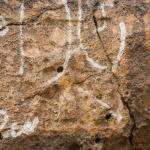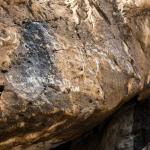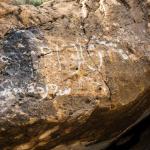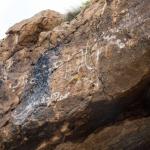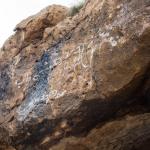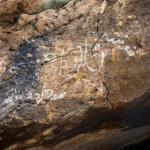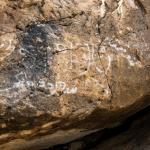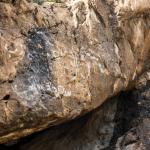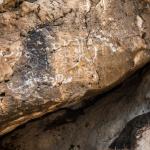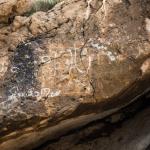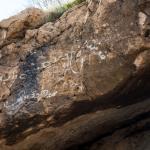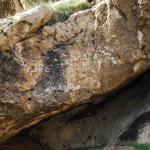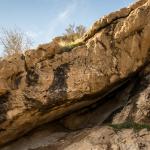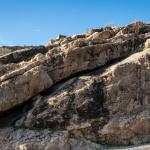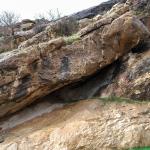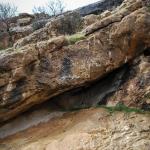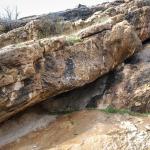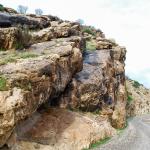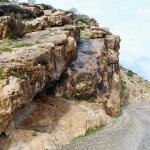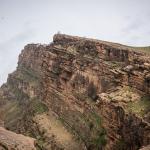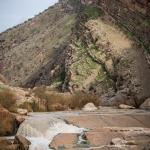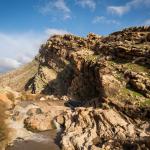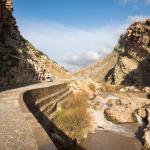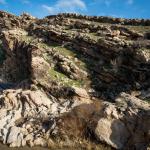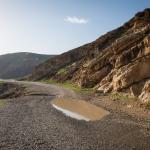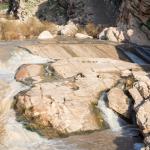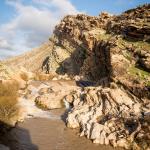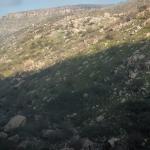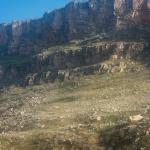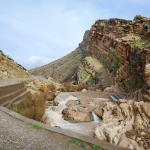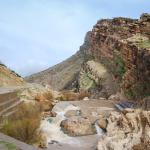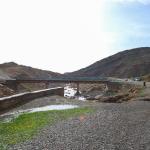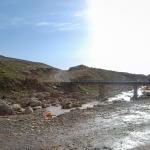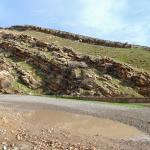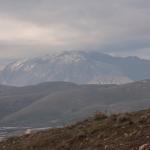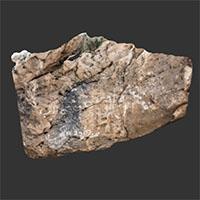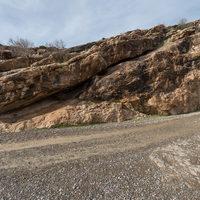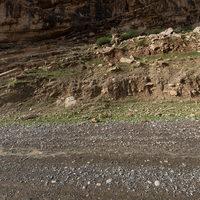Site Profile
This curious relief is found near the modern village of Dailaija, about 25 km east-southeast of Sulaymaniyah/Slemani in Iraqi Kurdistan. The village is set into the slopes of the Qara Dagh, one of the western ranges of the Zagros Mountains. Streams flowing from Dailaija and the village of Sola, to its north, converge about 3.5 km to the west into the larger stream of the Basara. Right beyond this point of confluence, the river crosses through a high hill and flows through a gorge called the Darband-i Basara. The image has been carved on the rough northern face of this pass (see the panorama).
Due to its highly worn state, small size, and relatively remote location, the relief remains little known outside of Iraq and even outside of the Sulaymaniyah/Slemani region’s archaeological community. The current condition of the work renders interpretation of its subject matter and chronology challenging, but it can be dated with some certainty to the centuries around the turn of the 2nd millennium BC.
Media
Description & Iconography
History
On the basis of its iconography and style, the Dailaija relief can be roughly dated to the late 3rd or early 2nd millennium BC. A number of rock reliefs of this era, found in the general vicinity, revolve around the theme of the triumphant ruler (e.g., Darband-i Gawr and Darband-i Belula, among others); several others include the ruler in a relationship with a divinity, as may be the case at Dailaija. Presuming it was commissioned by a ruler, its wide chronological window and lack of inscription prevent its attribution to any particular personage. It could have been commissioned by a dynast from the Mesopotamian heartland, perhaps during a campaign in the area; it is more likely, however, that as with the Annubanini relief, it was carved by a Lullubi king or another local ruler. It is anticipated that future study will reveal more about this tantalizing image.

